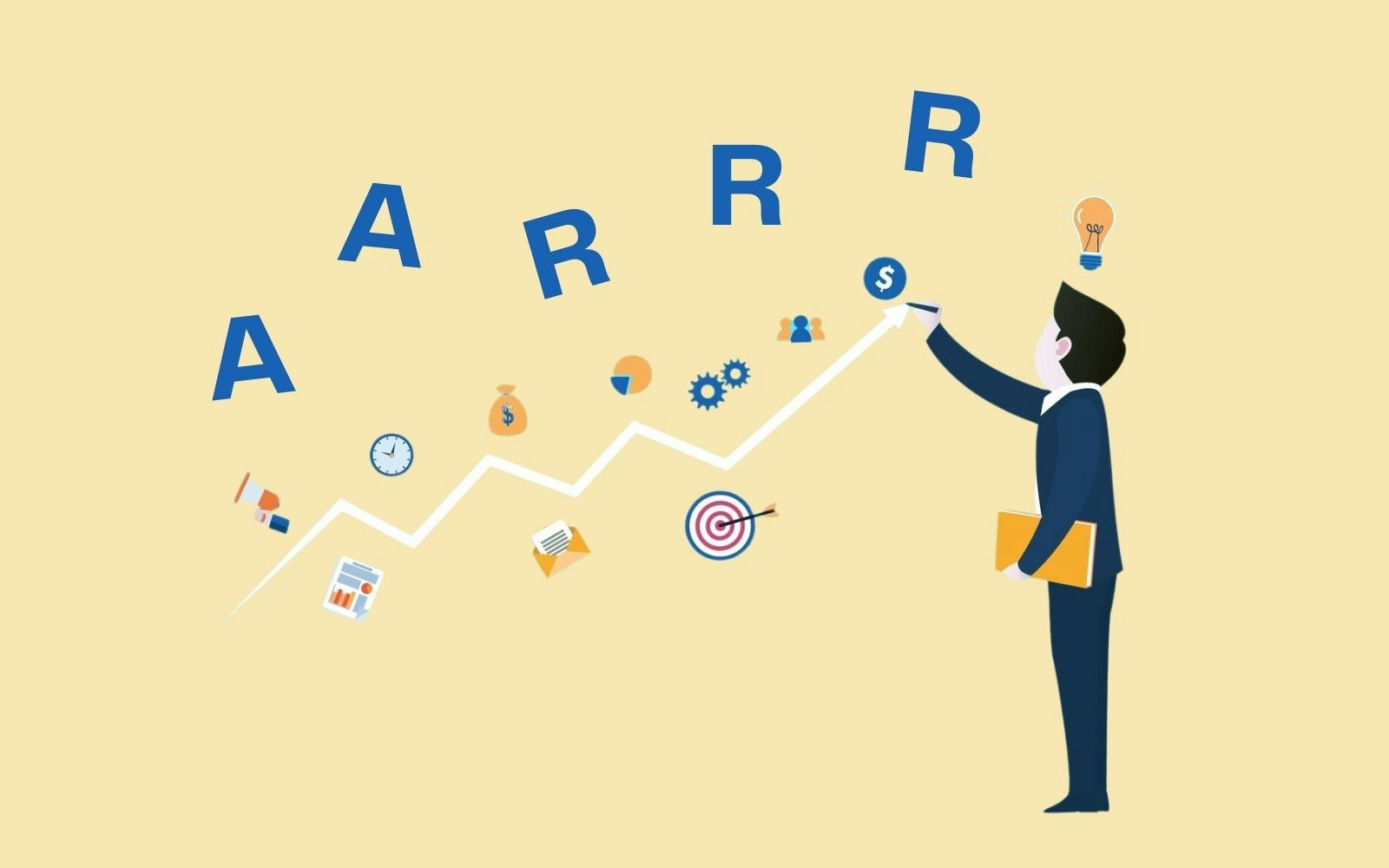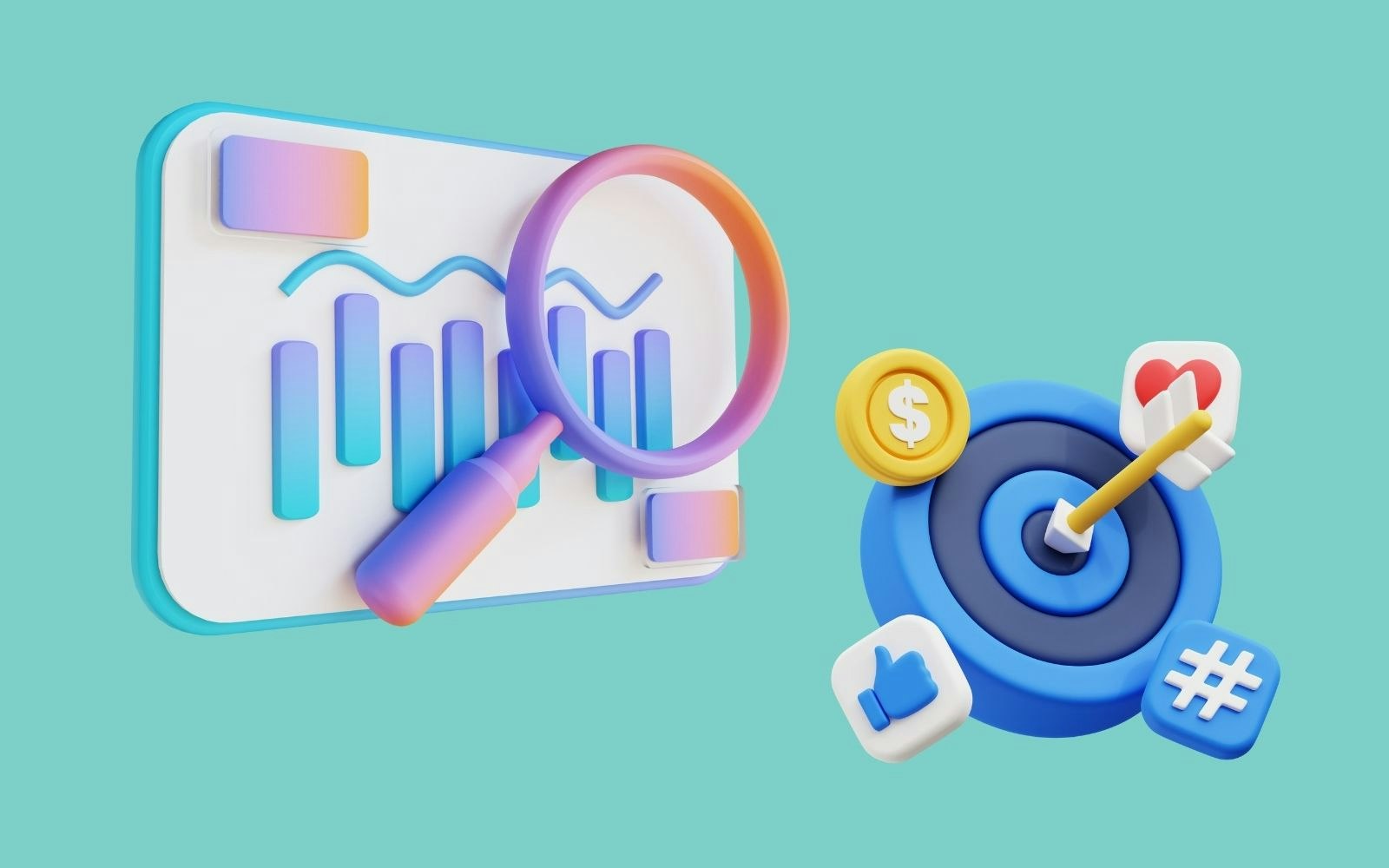
Data-driven marketing: definition, tools and key steps to success
7min • Last updated on May 26, 2025

Olivier Renard
Content & SEO Manager
According to Statista, the world will produce 181 zettabytes of digital data in 2025. That's three times more than in 2020, and 12 times more than in 2015. Just imagine: if each byte were a grain of rice, the volume produced would more than cover the surface of the planet!
Companies understand the importance of leveraging data to grow. However, to date, only 4 out of 10 of them have really adopted a data-driven strategy.
Key Takeaways:
Data-driven marketing relies on data to understand customers and tailor marketing actions.
A data-driven approach enhances campaign efficiency, loyalty, and results.
Implementing data-driven marketing requires identifying data types, collecting, analysing, and activating them.
Modern technologies enable data utilisation by marketers without technical expertise.
🔎 Find out everything you need to know about data marketing: its definition, its benefits, the types of data to be exploited and the essential tools. Get practical advice on integrating this strategy and maximising your performance. 🚀
Definition and benefits of data-driven marketing
A simple definition of data-driven marketing
Data-driven marketing involves leveraging measurable data to guide marketing strategies and actions.
It focuses on collecting, analysing, and using data to better understand customers and design personalised and effective campaigns.
In other words, it transforms assumptions into informed decisions based on factual data.
For example, a fashion brand can analyse customers' purchasing habits to offer tailored recommendations or anticipate seasonal demands.
By combining this data with inputs from various sources (websites, social media, in-store interactions), companies create coherent and engaging experiences across channels.
Why is data-driven marketing essential?
Today, 8 out of 10 consumers are more likely to make a purchase when a brand delivers a personalised experience (Medallia). Yet, only 26% of customers feel they receive this level of personalisation.
McKinsey and BCG also reveal that companies with data-driven strategies see profits increase by up to 25%.
Data-driven marketing responds to the demand for tailored experiences. It offers deeper customer insights to craft effective, engaging strategies.
By relying on trustworthy data, businesses optimise budgets, adapt to market changes, and deliver memorable customer experiences.
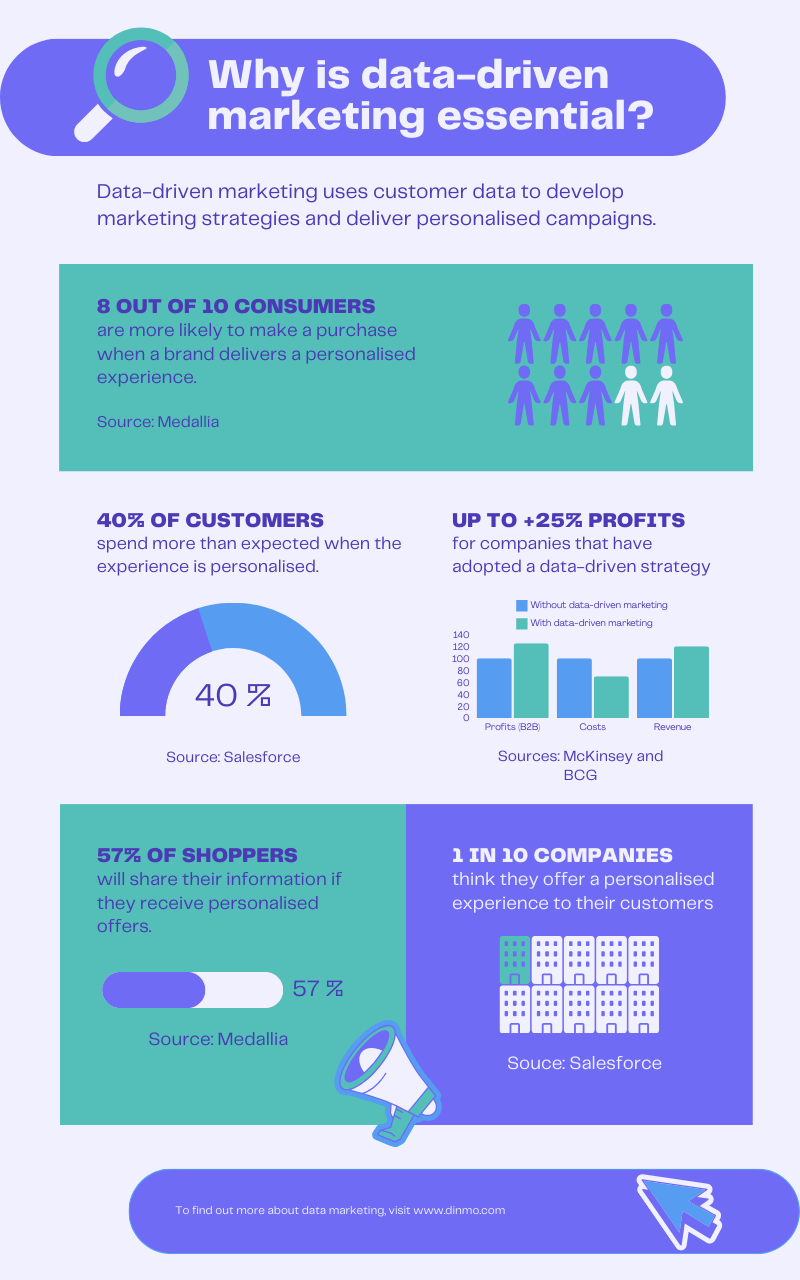
The benefits of data marketing
The types of data to be used in data-driven marketing
First-party, Second-party, and Third-party Data
In the field of data-driven marketing, three main categories of data play an essential and complementary role in the development of an effective marketing strategy.
First-party data: Collected directly by businesses through customer interactions.
This includes demographics, purchase history, website behaviour, email responses, and loyalty programme participation.
These data are precise, reliable, and compliant with regulations, as they stem directly from the relationship between brand and audience.
Second-party data: These are the first-party data of another company, shared as part of a partnership.
For instance, a retailer may share insights from its loyalty programme with a partner brand.
As this is exclusive, high-quality data, it is useful for obtaining detailed insights into the target audience.
Third-party data: Collected via third-party cookies or aggregators, these offer a broad overview of audiences.
Although this data is useful for improving the targeting and reach of campaigns, its reliability is limited and its use is restricted by regulations (GDPR, CCPA etc).
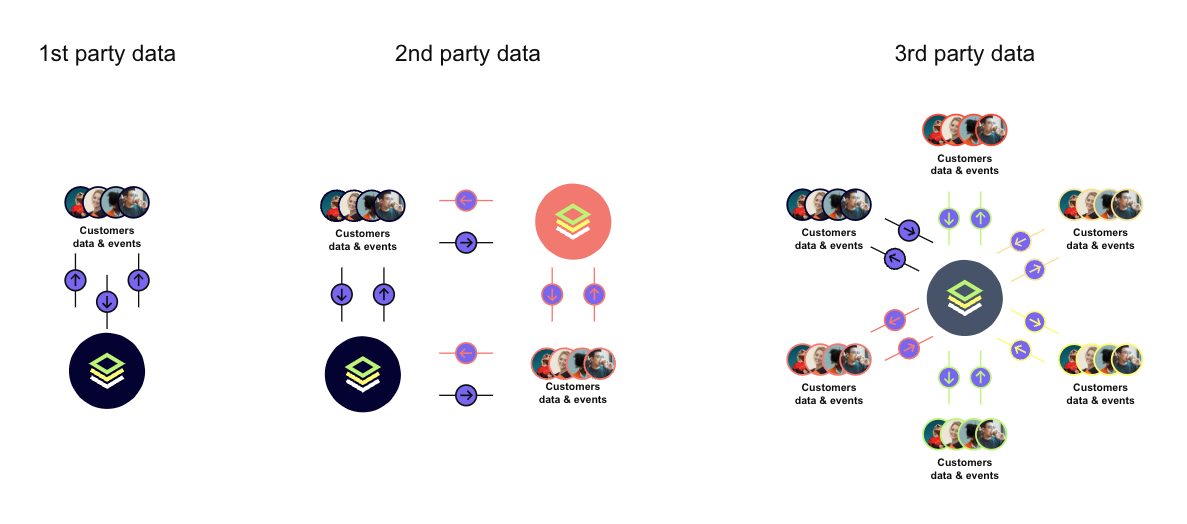
What are 1st, 2nd and 3rd party data?
The emergence of zero-party data
Zero-party data are voluntarily shared by customers with a brand. These are their preferences, interests or expectations. Zero-party data provide unmatched accuracy as they directly reflect consumer wishes.
For example, a user might fill out a quiz on an e-commerce site to receive personalised recommendations. Subject to the same privacy and consent rules as first-party data, they are incredibly valuable for businesses.
Zero-party data enable targeted marketing actions and build trust by respecting customer preferences. Yet, Gartner notes that only 33% of companies are ready to fully leverage them.
Integrating data-driven marketing into your strategy
Key steps to successful implementation
Define your objectives: integrating data marketing means first and foremost having a clear vision of the goals you want to achieve. Are you looking to improve customer loyalty, optimise your campaigns or win over new segments?
These objectives will guide the organisation of your data and the choice of appropriate tools.
Collecting and organising your data: collecting reliable, usable data is a key stage. It can come from a variety of sources, such as customer interactions, sales data and data from social networks.
Make sure that the data is complete, accurate, up-to-date and compliant with regulations.
Choose your tools: depending on the skills of your teams, choose the appropriate tools for each stage, from collection to activation. These include analysis tools, CRM solutions, data warehouses and Customer Data Platforms (CDPs), all of which enable you to extract valuable and exploitable insights.
Measure performance: continuously monitor the performance of your campaigns using analysis tools. Choose the right marketing metrics and KPIs. This enables you to adjust your strategies in real time and optimise your return on investment (ROI).
The tools and technologies to succeed
Select the right tool for each stage of your project.
Step | Objective | Type of tool | Main suppliers |
|---|---|---|---|
Data collection | Collect customer interactions (transactions, clicks, forms) at various contact points (web, app, shop). | Tracking tools, online forms, CRM | Google Tag Manager, Addingwell, Piwik Pro, Tealium, Hubspot |
Storage and organisation | Centralising and structuring the information collected to make it easier to use. | Data Warehouse, Data Lake, DMP, integrated CDP | Snowflake, Google BigQuery, Amazon Redshift, Treasure Data, Rudderstack |
Analysis and visualisation | Exploring data to extract actionable insights and visualise trends. | BI tools, analytics platforms | Tableau, Power BI, Google Analytics, Looker Studio |
Segmentation and activation | Create specific audiences and synchronise with activation tools. | Monolithic / integrated / composable Customer Data Platforms (CDPs), Reverse ETL | DinMo, Hightouch, Census, Imagino, Bloomreach, Adobe, Salesforce |
Campaign automation | Execute personalised campaigns to your audiences across multiple channels (email, SMS, push). | CRM, Marketing automation | Hubspot, Klavyio, Brevo, Mailchimp, Braze, Salesforce |
Monitoring and optimisation | Measure the performance of actions and adjust the strategy thanks to precise insights. | A/B Testing Tools, attribution platforms, CXP | A/B Tasty, Adjust, Contentsquare, Microsoft Clarity, Hotjar |
Implementing a data-driven marketing approach
The DinMo composable CDP offers great flexibility for companies with a data warehouse. Thanks to its predictive attributes based on artificial intelligence, it enables precise segmentation and advanced personalisation.
Thanks to its no-code functions, your business teams can deploy their first use cases in thirty minutes.
👇 Discover the possibilities offered by the DinMo composable CDP for your data marketing projects.
Best practices for effective data-driven marketing
Transparency with users: provide clear information about the collection and use of data, so as to establish a relationship of trust.
Compliance: make sure you comply with regulations such as the GDPR or the CCPA. This involves obtaining the necessary consents, securing and accessing personal information.
Data quality: give priority to accurate, reliable and up-to-date information. This guarantees relevant campaigns and optimises your performance.
Test and experiment: Data-driven marketing requires an iterative and flexible approach. Be prepared to test various hypotheses, experiment with different scenarios and evaluate the results.
Examples of successful data-driven marketing
Data marketing is not reserved for one industry in particular. It can be adapted to all sectors to meet the expectations of consumers and businesses.
Use cases in e-commerce
E-commerce businesses use data marketing to personalise their campaigns and boost sales.
You may already have had experience of this - Amazon is an emblematic example. Thanks to its predictive analysis algorithms, the platform offers product recommendations based on purchase history and browsing behaviour.

Personalised recommendations (Source: Amazon)
DinMo customer Interflora is a perfect example of the effectiveness of data marketing in e-commerce. Thanks to our composable CDP, the company was able to create precise audiences and orchestrate multi-channel paths to optimise its campaigns.
This led to a 17% drop in CPC and a 32% rise in conversions. Optimised management of sales pressure, resulting in a better match with customer expectations.
👇
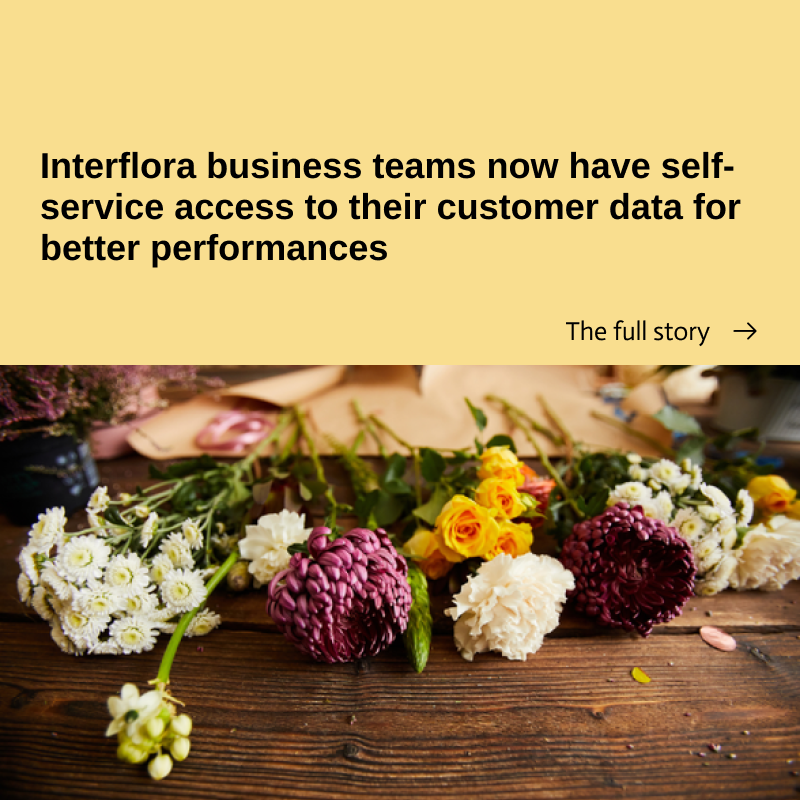
Interflora customer case
Increase your sales thanks to the power of your data
B2B use cases
In B2B, data marketing plays a key role in customer acquisition and retention. HubSpot uses data to segment its prospects and offer personalised content at each stage of the buying process.
This approach has led to an increase in qualified leads and a significant improvement in the conversion rate.
In another example, Ankorstore used DinMo to boost its advertising performance on Google Ads. The B2B marketplace reduced its CPA by 20% and increased its conversion rate by 24% thanks to more personalised messages.
By leveraging our predictive metrics, Ankorstore is able to identify the specific needs of each segment to strengthen engagement and loyalty.
Conclusion
Data-driven marketing is now essential for staying competitive. It aims to improve the targeting of your campaigns, optimise your budgets and meet the growing expectations of consumers.
Artificial intelligence makes it possible to offer even more precise and relevant experiences. Zero-party and first-party data are becoming major assets to be exploited.
Composable CDPs, such as DinMo, are becoming key tools for segmenting and activating your data effectively. Switch to a data-driven strategy today and open up new opportunities for your business.
✨ Find out how DinMo can help you!
FAQ
What defines data-driven marketing compared to traditional marketing?
What defines data-driven marketing compared to traditional marketing?
Data-driven marketing uses customer data to develop marketing strategies and deliver targeted campaigns.
Rather than relying on assumptions, data-driven marketing uses information from real interactions and behavioural data to make informed decisions. This approach enables brands to target the right audience with the right message, improving effectiveness and return on investment (ROI).
Tools like Customer Data Platforms (CDPs) and analytics softwares help companies create campaigns that really resonate with their audience and increase their business.
How can businesses collect and organise first-party and zero-party data effectively?
How can businesses collect and organise first-party and zero-party data effectively?
Companies can collect first-party data through owned channels like websites, apps, and CRM systems, while zero-party data comes directly from customers via surveys or preference centres.
Data warehouses and composable CDPs are invaluable allies when it comes to centralising, segmenting and activating data. They enable rapid, secure and compliant integration with companies' marketing and sales tools.
This approach fosters personalisation and improves the customer experience at all points of contact.
How can data-driven marketing improve customer loyalty and engagement?
How can data-driven marketing improve customer loyalty and engagement?
Data-driven marketing enables brands to better understand their customers' behaviour and preferences.
They can then create tailored experiences to achieve their objectives: winning over new segments, optimising their campaigns or improving loyalty.
For example, analysing purchase histories helps to predict customer preferences, enabling personalised product recommendations. Similarly, segmentation tools help to create targeted campaigns that respond directly to the specific needs of the audience.
Research shows that customers are more likely to engage with brands that offer relevant and timely interactions.
By leveraging these insights, businesses not only improve customer satisfaction but also build lasting relationships and increase repeat purchases.
What are the key roles in data-driven marketing?
What are the key roles in data-driven marketing?
Data-driven marketing involves several specialised roles that help businesses make the most of their data. A data analyst focuses on interpreting data to identify trends and insights for campaign optimisation.
The data scientist builds predictive models and algorithms to forecast customer behaviour. Marketing analysts use data to assess campaign performance and audience engagement.
A CRM manager leverages customer data for personalised marketing strategies, while a marketing automation specialist manages tools to automate data-driven campaigns.
Together, these professionals ensure data accuracy, better decision-making, and targeted customer experiences that drive business growth.



















